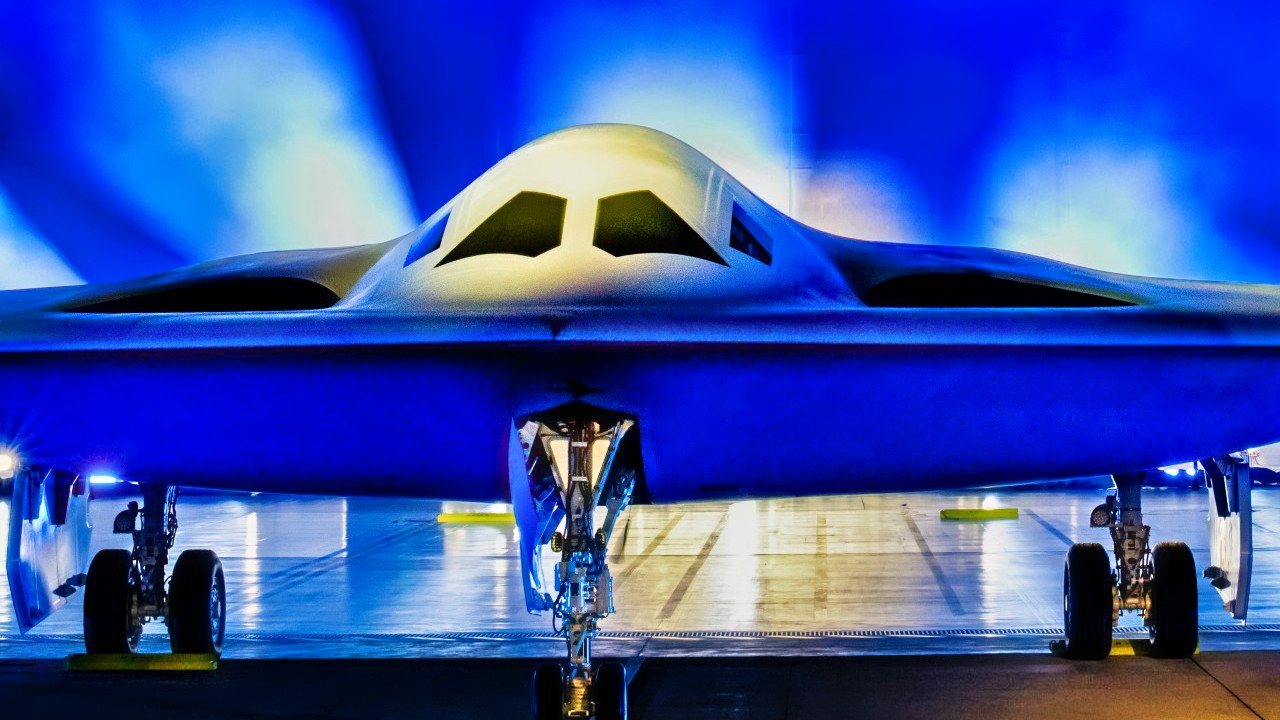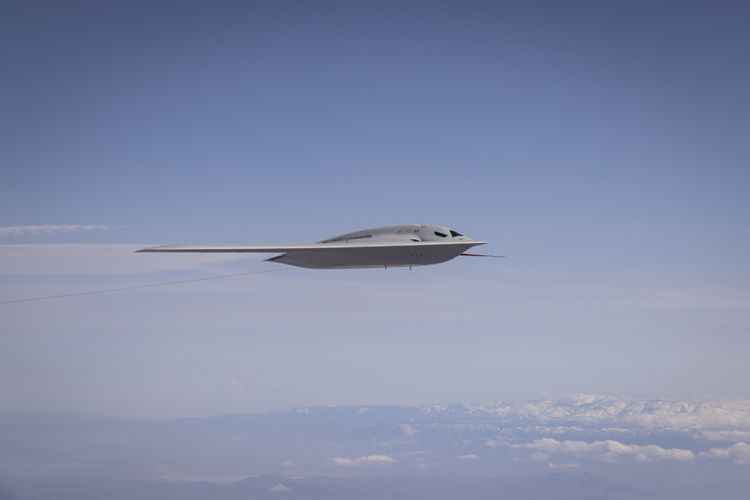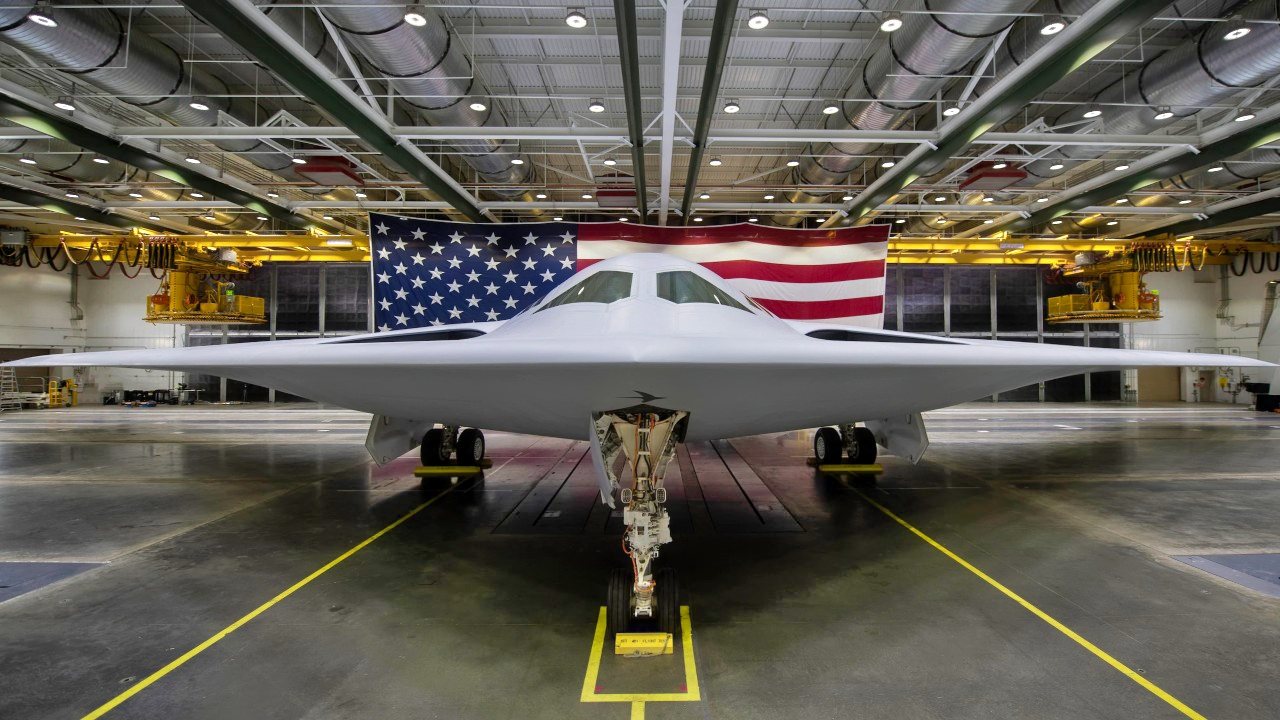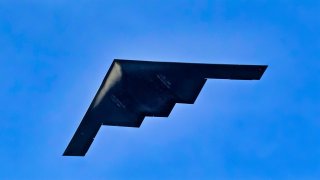The Air Force Needs an Unbelievable 300 B-21 Raider Stealth Bombers
As the U.S. faces growing global threats, particularly from China, the Air Force aims to produce 100 B-21s but may need 300 to ensure readiness and maintain air superiority.
Summary and Key Points: The B-21 Raider, developed by Northrop Grumman, is poised to become America's ace-in-the-hole for modern warfare, particularly in a potential conflict with China.

-This next-generation stealth bomber, a smaller and more advanced successor to the B-2 Spirit, is designed to traverse vast distances and strike deep within enemy territory.
-With sophisticated stealth capabilities and a larger weapons bay, the B-21 can carry both conventional and nuclear payloads.
Most Important Point: As the U.S. faces growing global threats, particularly from China, the Air Force aims to produce 100 B-21s but may need 300 to ensure readiness and maintain air superiority.
The B-21 Raider: 300 Bombers or Bust?
According to its proponents, the stealth plane can “hold virtually any conventional or nuclear target in the world at risk.” At a time when the United States Air Force has slowly—dangerously—been allowed to decline in size since the end of the Cold War, with next-generation innovations, such as the Sixth-Generation warplane, proving increasingly difficult to build in a timely manner, the B-21 is a necessary stopgap for the Air Force. And what a “stopgap” it is.
The future of modern warfare is going to be increasingly subject to the tyranny of distance. In international relations, we hear often about the “stopping power of water.” Considering that the People’s Republic of China is the number one strategic threat that the United States currently faces, and that the geography involved in any Sino-American conflict would be dominated by vast distances—to say nothing of the fact that any conflict between Beijing and Washington would be happening in China’s proverbial backyard—America needs a weapons platform that can traverse those distances and still hold the enemy hostage. The B-21 is a great platform because it is not such a new system that entirely new supply chains are needed to sustain it. Yet, it is still a much-needed enhancement from the stealth planes that preceded it.

Further, it is a step ahead of anything that America’s near-peer rivals have in their arsenals.
B-21 Raider: A Spectacular Design
Based on the design of the B-2 stealth bomber, the B-21 Raider is much smaller than its predecessor with a much larger weapons bay. It is a sign that at least some folks embedded within America’s byzantine defense bureaucracy are reading the room. Namely, that we live in an era of rapidly growing, high-tech threats coupled with increasingly constrained defense budgets. One of the key aspects of the B-21’s design that made it such a desirable system is the fact that its sophisticated stealth capabilities allow for the bomber to “carry out deep strike missions against advanced adversaries, and carry both conventional and nuclear weapons.”
Back in 2009, the Air Force was working on the “Next Generation Bomber” (NGB) project. At that time, the Air Force was still enthralled by the delusions of the post-Cold War era. According to Aviation Week, the NGB Project was “characterized by as complex and ambitious, with a full suite of intelligence, surveillance, and reconnaissance (ISR) capabilities, sensors, a self-defense capability and long endurance.”
As the Aviation Week piece tersely explains, then-Secretary of Defense Robert M. Gates scrapped the program in April 2009. The Air Force’s project to develop the next-generation bomber, therefore, languished in what Hollywood-types might refer to as “Development Hell.” Finally, it took the current geopolitical crises of the 2020s to prompt Air Force technologists to scrap their fantastical notions for the NGB and to turn toward a more practical solution. Rather than reinvent the wheel, or in this case, shall we say the wing, the Air Force opted instead to simply enhance a bomber whose design they’ve been familiar with for decades.
Defense Policy Fantasists Hardest Hit
The B-21, therefore, is a blow to the fantasists who populate the Beltway’s military-industrial complex. But it very well may be ace-in-the-hole that America needs when China decides to surprise the world by invading Taiwan. Because the Pentagon could rely on existing manufacturing capabilities to mass produce the B-21, the Air Force ultimately went with the B-21 over other, more fanciful designs. Obviously, the Air Force—which, along with the Navy and Marines will be the tip of the spear in any fight against China—recognizes the dire threat our forces today face. They needed a reliable, readily available bomber.

In an age of anti-area/access-denial (A2/AD), this capability will prove decisive in any future conflict. The Air Force has ordered 100 units to be produced. The Air Force really needs around 300 of these units as quickly as possible.
Nevertheless, the military is recognizing that striving to build the wünderwaffe could easily create critical gaps in America’s defenses—and allow for a rival, like China, to exploit such vulnerabilities in the near-term. The Pentagon is at least tempering its obsession with building the wünderwaffe in favor of more practical systems that can be quickly deployed soon. Congress should approve funding to ensure that the Air Force gets at least 300 of these planes in the next few years.
About the Author
Brandon J. Weichert is a former Congressional staffer and geopolitical analyst who is a contributor at The Washington Times, as well as at American Greatness and the Asia Times. He is the author of Winning Space: How America Remains a Superpower (Republic Book Publishers), Biohacked: China’s Race to Control Life, and The Shadow War: Iran’s Quest for Supremacy. Weichert can be followed via Twitter @WeTheBrandon.
Image Credit: Shutterstock or Creative Commons.


